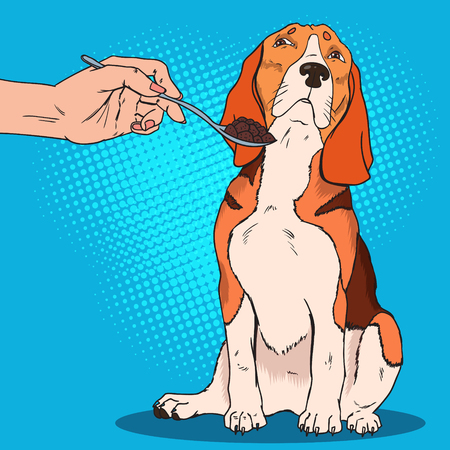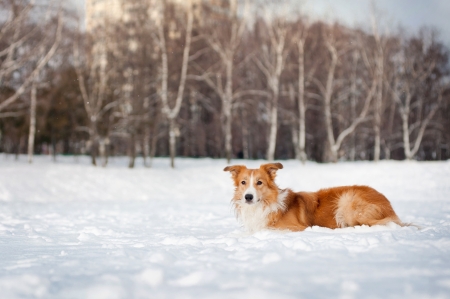Understanding Your Dog’s Exercise Needs
Every pup is unique, just like every family on the block has its own morning routine. When it comes to exercise, a one-size-fits-all approach simply doesn’t work for our four-legged companions. Different breeds have vastly different energy levels and physical requirements. For example, a spunky Border Collie thrives on daily challenges and vigorous play, while a laid-back Bulldog may be happiest with a few short strolls and lots of porch lounging. Age plays a big role too—a bouncy puppy needs opportunities to burn off energy in safe bursts, whereas senior dogs may benefit from gentle walks or slow-paced sniffing adventures. Health conditions matter as well; pups with arthritis, respiratory issues, or heart concerns need specially tailored routines that keep them moving without overdoing it. That’s why it’s so important to get to know your dog’s individual needs and personality. Personalizing your pup’s exercise plan keeps them happy, healthy, and eager for whatever weather Mother Nature has in store—whether it’s sunny fetch sessions or cozy indoor games during a rainstorm.
2. Exercising Your Dog in Hot Weather
When summer temperatures soar, it’s important to adjust your dog’s exercise routine to keep them safe and happy. Dogs can quickly overheat, especially breeds with thick coats or short snouts like bulldogs and pugs. Here are some essential tips for keeping your furry friend cool during those hot months.
Best Times of Day for Walks
The early morning and late evening are the safest times to walk your dog when it’s hot outside. Avoid midday walks when the sun is strongest and pavement can become dangerously hot for sensitive paws. A good rule of thumb is: if you can’t hold your hand on the pavement for five seconds, it’s too hot for your pup!
Recommended Walking Times
| Time of Day | Temperature | Recommendation |
|---|---|---|
| Early Morning (before 8 a.m.) | Coolest | Best for exercise |
| Midday (10 a.m. – 4 p.m.) | Hottest | Avoid walking |
| Evening (after 7 p.m.) | Cools down | Safe for shorter walks |
Signs of Heat Exhaustion in Dogs
It’s crucial to recognize the warning signs of heat exhaustion before they become dangerous. Watch for heavy panting, glazed eyes, excessive drooling, unsteadiness, vomiting, or a rapid heart rate. If you notice any of these symptoms, move your dog to a cool area immediately and offer water. Seek veterinary help if symptoms persist.
Heat Exhaustion Warning Signs Table
| Sign | Description |
|---|---|
| Panting Heavily | Rapid, loud breathing that doesn’t stop after resting |
| Lethargy or Weakness | Unwillingness to move, stumbling or collapsing |
| Drooling Excessively | Thick saliva or foam around mouth |
Recommended Gear for Hot Weather Walks
- Cooling Vests: These vests use evaporative cooling technology to help lower your dog’s body temperature during outdoor activities.
- Portable Water Bottles: Always carry a collapsible bowl or a water bottle designed for pets so you can offer frequent drinks.
- Paw Protection: Consider booties or paw wax to shield sensitive pads from hot surfaces.
By planning ahead and taking these precautions, you and your canine companions can enjoy safe summer adventures together—whether you’re strolling through your neighborhood or exploring a sunny trail.

3. Keeping It Fun and Safe in Cold Weather
When winter arrives and frosty winds start to blow, your pup still needs exercise—but safety comes first! If you live in a cold climate, try scheduling walks or outdoor playtime during midday when the sun is at its warmest. Keep the sessions a bit shorter than usual and watch for icy patches on sidewalks or trails that could cause slips for both you and your furry friend.
Winter Exercise Routines
Mix up your routine with games like fetch in the snow (using brightly colored toys), or set up an indoor obstacle course if it’s too chilly outside. If you have a spacious yard, let your dog chase snowballs or explore snowy mounds—but always supervise them closely and don’t let them eat too much snow, which can upset their stomach.
Paw Protection Tips
Your dogs paws need extra care in the winter. Salt and de-icing chemicals on sidewalks can irritate sensitive paw pads. Consider using dog booties for extra protection—most pups get used to them quickly with positive reinforcement! After walks, wipe your dog’s paws with a damp cloth to remove any residue. You can also apply a pet-safe paw balm before heading out to help prevent cracking and dryness.
How to Tell if Your Dog is Too Cold
Even the fluffiest dogs can get chilly! Signs that your pooch might be too cold include shivering, whining, lifting their paws off the ground, slowing down, or seeking shelter. If you notice any of these signs, head inside right away and snuggle up together under a cozy blanket. Remember—if it’s too cold for you, it’s probably too cold for your dog too!
4. Rainy Day Workouts
Don’t let a little rain wash away your pup’s energy! While it might be tempting to skip exercise on wet days, there are plenty of ways to keep your dog active and happy indoors or with the right gear for outdoor adventures.
Ideas for Indoor Activities
Rainy days are perfect for getting creative inside. Here are some fun activities that will help burn off energy and strengthen your bond with your dog:
| Activity | Description |
|---|---|
| Treat Hide-and-Seek | Hide treats around the house and encourage your dog to sniff them out. This stimulates their mind and nose! |
| Stair Sprints | If you have stairs, toss a toy up and down for a quick cardio workout (just make sure steps aren’t slippery). |
| Indoor Obstacle Course | Use cushions, chairs, and blankets to create a mini agility course in your living room. |
| Tug-of-War | A good old-fashioned game with a sturdy rope can work wonders for both of you. |
| Interactive Toys & Puzzles | Food puzzles or treat-dispensing toys keep dogs mentally engaged when stuck inside. |
Rainy Day Walks: Gear Up!
If you and your furry friend don’t mind getting a bit wet, a rainy walk can be enjoyable—just make sure you’re prepared! Choosing the right raincoat or boots helps keep your dog comfortable and healthy. Here’s what to look for:
| Item | What to Look For |
|---|---|
| Dog Raincoat | Waterproof, lightweight, with reflective strips for visibility. Make sure it covers the belly if possible! |
| Dog Boots | Non-slip soles, easy to put on/take off, waterproof material. They protect paws from mud and cold puddles. |
| Towel or Shammy | Keep one by the door for quick drying after walks. |
Boredom Busters When It’s Wet Outside
No matter how much you love cozy weather, too many days indoors can leave even the chillest pup feeling stir-crazy. Try rotating toys so there’s always something “new,” teach your dog a new trick, or schedule extra cuddle time. Remember, mental stimulation is just as important as physical exercise—especially when the weather keeps you inside!
5. Navigating Windy and Stormy Conditions
When the wind starts howling or a thunderstorm rolls in, it’s time to switch up your regular dog-walking routine for safety’s sake. High winds can make even familiar parks unpredictable, while loud thunder and flashing lightning can be terrifying for pups. Here are some tips for keeping your dog safe, calm, and secure when the weather takes a wild turn.
Tips for Handling High Winds
Stick to Sheltered Areas: If you must exercise your dog during windy conditions, choose a route that offers natural protection, like wooded trails or paths near buildings. Avoid open fields where flying debris could pose a risk.
Secure Your Leash: Use a sturdy leash and well-fitted harness to prevent your dog from getting spooked and bolting if something unexpected happens—think sudden gusts or blowing trash cans.
Watch for Hazards: Be mindful of falling branches, tumbling garbage bins, or anything else that could be picked up by the wind. Keep walks short and stay alert to your surroundings.
Dealing with Thunderstorms
Stay Indoors: When thunder rumbles or lightning flashes, it’s best to keep your dog inside. Even dogs who normally love the outdoors can become anxious during storms.
Create a Safe Space: Set up a cozy spot away from windows where your pup can retreat—think their favorite bed in a quiet room. Some dogs feel more secure with background noise like soft music or white noise.
Offer Comfort: If your dog is anxious, stay close by and offer gentle reassurance. Avoid scolding fearful behavior; instead, reward calmness with treats or soothing words.
Safety Measures You Should Take
- ID Tags & Microchips: Storms may cause frightened dogs to bolt. Make sure your pup’s ID tags are up-to-date, and consider microchipping as an added precaution.
- Avoid Metal Objects: During thunderstorms, steer clear of metal fences or objects that could conduct electricity if struck by lightning.
- Paw Protection: Debris from storms can litter sidewalks and yards. Check your dog’s paws after outdoor time for cuts or scrapes.
A Little Extra TLC
No matter the weather, remember that exercise isn’t just about physical activity—it’s also about bonding with your furry friend. On stormy days, indoor games like tug-of-war or hide-and-seek can help burn off energy while keeping everyone safe and sound until the skies clear up again.
6. Watching for Weather-Related Hazards
Every season brings its own set of challenges when it comes to keeping your dog safe during outdoor activities. As pet parents, it’s important to stay alert for weather-related hazards that can pop up during your daily walks or backyard playtime. Here’s a quick overview of what to look out for and how to help your furry friend avoid trouble year-round.
Ice and Snow in Winter
Slippery sidewalks and icy patches can be dangerous for both you and your pup. Not only do they increase the risk of slips and falls, but rock salt and de-icers can also irritate paws. Try using pet-safe booties and always wipe your dog’s feet after walks to remove any chemicals or ice balls.
Hot Pavement in Summer
During the warmer months, asphalt and concrete can heat up quickly—sometimes enough to burn sensitive paw pads. A good rule of thumb: if you can’t hold the back of your hand on the pavement for seven seconds, it’s too hot for your dog. Walk early in the morning or later in the evening when temperatures are cooler, and stick to grassy areas whenever possible.
Spring Allergens
Springtime means blooming flowers—and often, an uptick in pollen levels. Just like us, dogs can suffer from seasonal allergies. Watch for signs such as excessive licking, scratching, watery eyes, or sneezing after time outdoors. Wipe down their coat and paws after walks and consider consulting your vet if symptoms persist.
Pests and Insects Year-Round
No matter the season, bugs like ticks, fleas, mosquitoes, and even stinging insects can pose threats to your pet’s health. Check your dog’s fur regularly—especially after hikes or time spent in tall grass—and talk to your vet about preventive treatments that suit your climate.
How to Recognize Hazards Early
The best way to keep your pup safe is by staying observant. Before heading out, check weather apps for alerts about heat waves or storms, scan paths for visible dangers like broken glass or puddles of antifreeze (which is toxic), and pay attention to how your dog reacts to the environment. If they’re limping, panting heavily, or trying to avoid certain surfaces, it’s time for a break indoors.
Your Pet’s Safety Comes First
Exercising with your dog is one of life’s simple joys—just remember that every outing is a little adventure filled with surprises. Keeping an eye out for seasonal hazards will help ensure that you both enjoy many happy (and safe!) days exploring together.
7. When to Skip the Walk: Knowing Your Dog’s Limits
Even for the most energetic pups, there are days when skipping the walk is truly the safest and kindest choice. As pet parents, it’s important to recognize when weather conditions or your dog’s health mean it’s time to stay cozy indoors. Understanding your dog’s signals and responding to them can prevent serious issues and keep your furry friend happy and healthy.
Reading Your Dog’s Body Language
Dogs often communicate their discomfort through subtle cues before things get serious. Watch for signs like excessive panting, drooling, lagging behind, or hesitating to go outside. If your pup is pawing at the door to return inside, seeking shade, or lying down more than usual during a walk, these are clear hints that it’s time to call it quits.
Weather-Related Red Flags
High heat can lead to heat exhaustion or even heatstroke in dogs. Symptoms include glazed eyes, rapid heart rate, vomiting, unsteady walking, or collapsing. In cold weather, watch for shivering, whining, lifting paws off the ground repeatedly, or curling up in a ball—these are all signals your dog is too cold to continue. Remember that older dogs, puppies, and short-nosed breeds like Bulldogs or Pugs are especially vulnerable in extreme temperatures.
Other Health Concerns
If your dog has a medical condition like arthritis, respiratory issues, or heart problems, check with your vet about safe exercise routines and be extra mindful of symptoms like limping, coughing, or sudden lethargy. Always prioritize indoor playtime or gentle activities on tough weather days.
Trust Your Instincts and Know Your Pup
No two dogs are exactly alike. Some will bravely face rainstorms while others balk at a single snowflake. As you share life together in every season, tune into your dog’s unique personality and preferences. If you ever feel unsure whether it’s safe to head outdoors, err on the side of caution—there’s no harm in enjoying a cozy day inside with interactive toys or a game of tug-of-war by the fireplace.
By honoring your dog’s limits and listening to their cues, you’re making sure every adventure together is safe and joyful—no matter what Mother Nature has in store.


